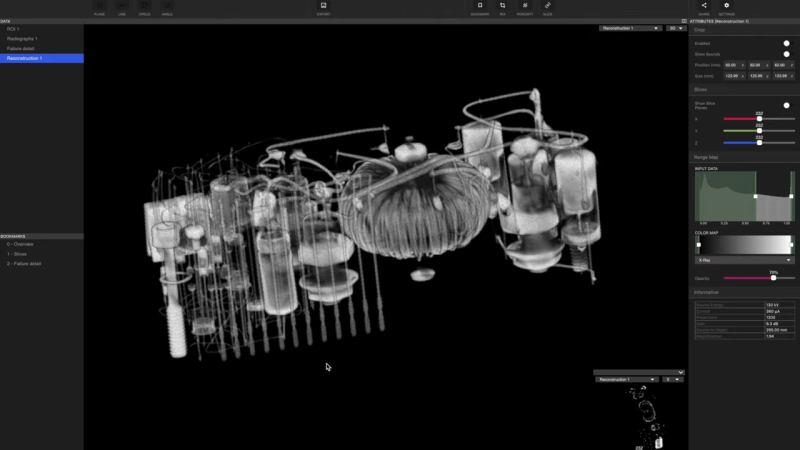We’ve recently got a look at how [Ken Shirriff] used an industrial CT scanner as a reverse engineering tool. The results were spectacular, with pictures that clearly showed the internal arrangement of parts that haven’t seen the light of day since the module was potted back in the 60s. And now, [Ken]’s cohort [Curious Marc] has dropped a video with more detail on the wonderful machine, plus deep dives into more Apollo-era hardware
If you liked seeing the stills [Ken] used to reverse engineer the obscure flip-flop module, you’re going to love seeing [Marc] using the Lumafield scanner’s 3D software to non-destructively examine several Apollo artifacts. First to enter the sample chamber of the CT scanner was a sealed module called the Central Timing Equipment, which served as the master clock for the Apollo Command Module. The box’s magnesium case proved to be no barrier to the CT scanner’s beam, and the 3D model that was built up from a series of 2D images was astonishingly detailed. The best part about the virtual models is the ability to slice through them in any plane — [Marc] used this feature to hunt down the clock’s quartz crystal.
[Marc]’s Apollo gyroscope was next up, and the look inside the sealed case was very revealing. The details of the mechanical construction were stunning, right down to the bearings supporting the gyro rotor. A power supply module that had seen better days also got the treatment; its scans revealed the exploded capacitor responsible for its rough outward appearance. All the scan data are publicly available on Lumafield’s website, although you’ll need to create an account if you want to play with the models.
As for the scanner itself: is it something that could be built at home? Perhaps. We’ve seen plenty of homebrew X-ray machines, and even a CT scanner or two. Let us know if you tackle a build like this — we’d love to get a look inside.

















I used to work with Food X-Ray systems which were basically modified baggage scanners. We were one of the first in the business. Conveyors and pumped through food grade pipes. The main business was to detect bones in boneless Chicken. Rejectors were used to divert the contaminants to the side. Premium canned Cat Food went through the pump systems. In the beginning, stories to tell around campfires from unshielded tubes and Columnators! It wasn’t very high energy most times. We X-rayed just about anything!
I’m now retired, but as a pentester I found that befriending my local Veterinary practice was very useful – and not just for my pets health. For a fee she would quite happily X-Ray items “out of hours”, great if you are reverse engineering (with full approval) a product that’s covered in security stickers. Several customers were amazed that we’d managed to find vulnerabilities inserting bits of wire into their product without opening the case or damaging the security labels. Being local she would gladly stay late at short notice to help out, and a few customers even asked if we had an X-Ray machine at our offices, as we managed to crack their products so quickly.
I wonder what the resolution on something like this is; does it have precise enough control to do PCB RE layer by layer?
You can get to a 1 micron cube per pixel on the industrial x-ray CT, have used them to inspect inner copper layers. Small volume at a time though
I see that image at the top of this article and all I can think of is “Well I’m damned if I can find anything wrong with it.”
Marc does a better explanation in his video than I can, but the short version is:
If you look at the left half, at the front in the middle there’s a capacitor. If you look above it, there’s a white blob. Apparently the blob is the dialectic material that is supposed to be *inside* that capacitor but has been blown out (cracking the potting material that the module is encased in). Marc and friends think that this will be a relatively easy repair.